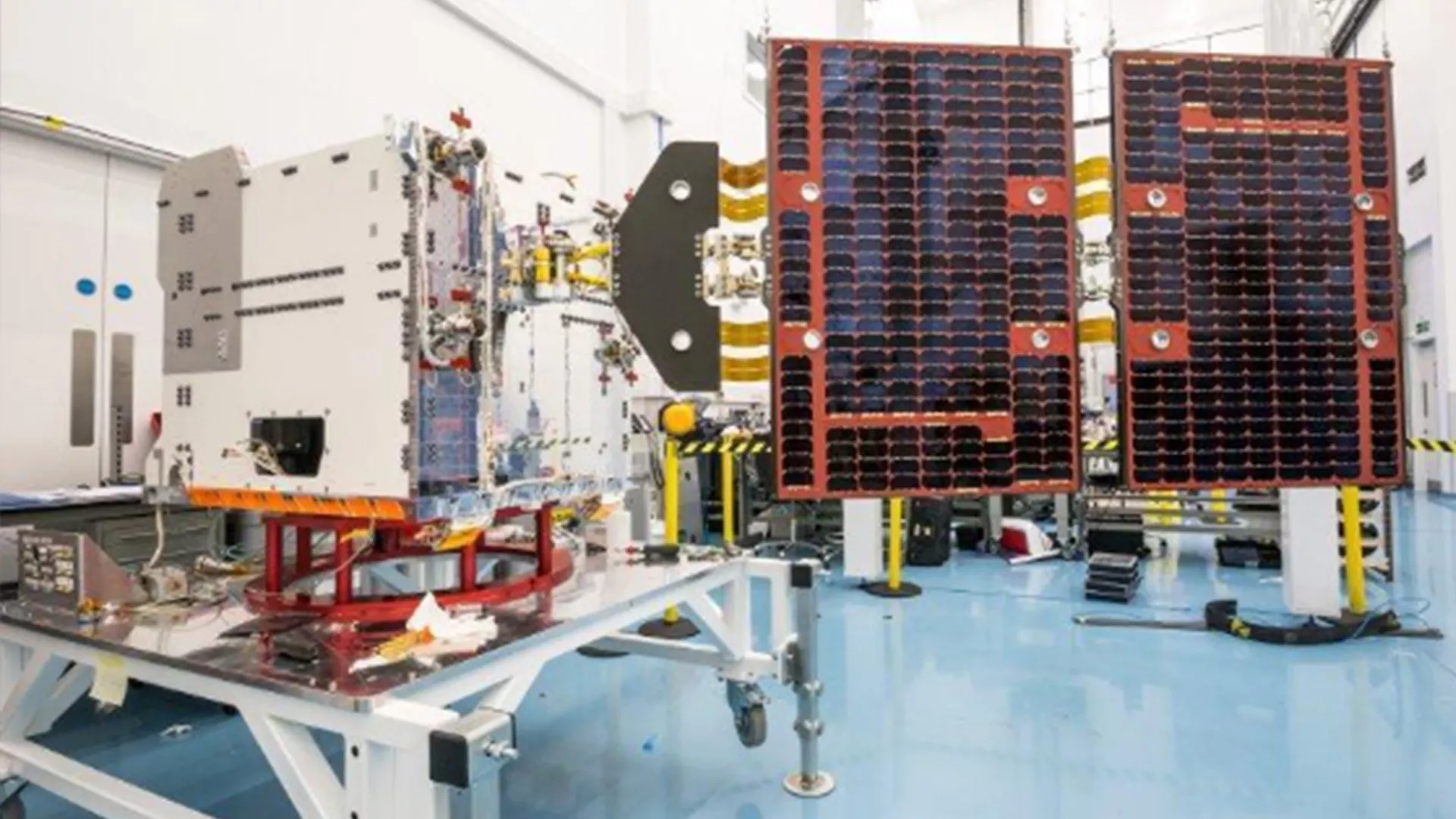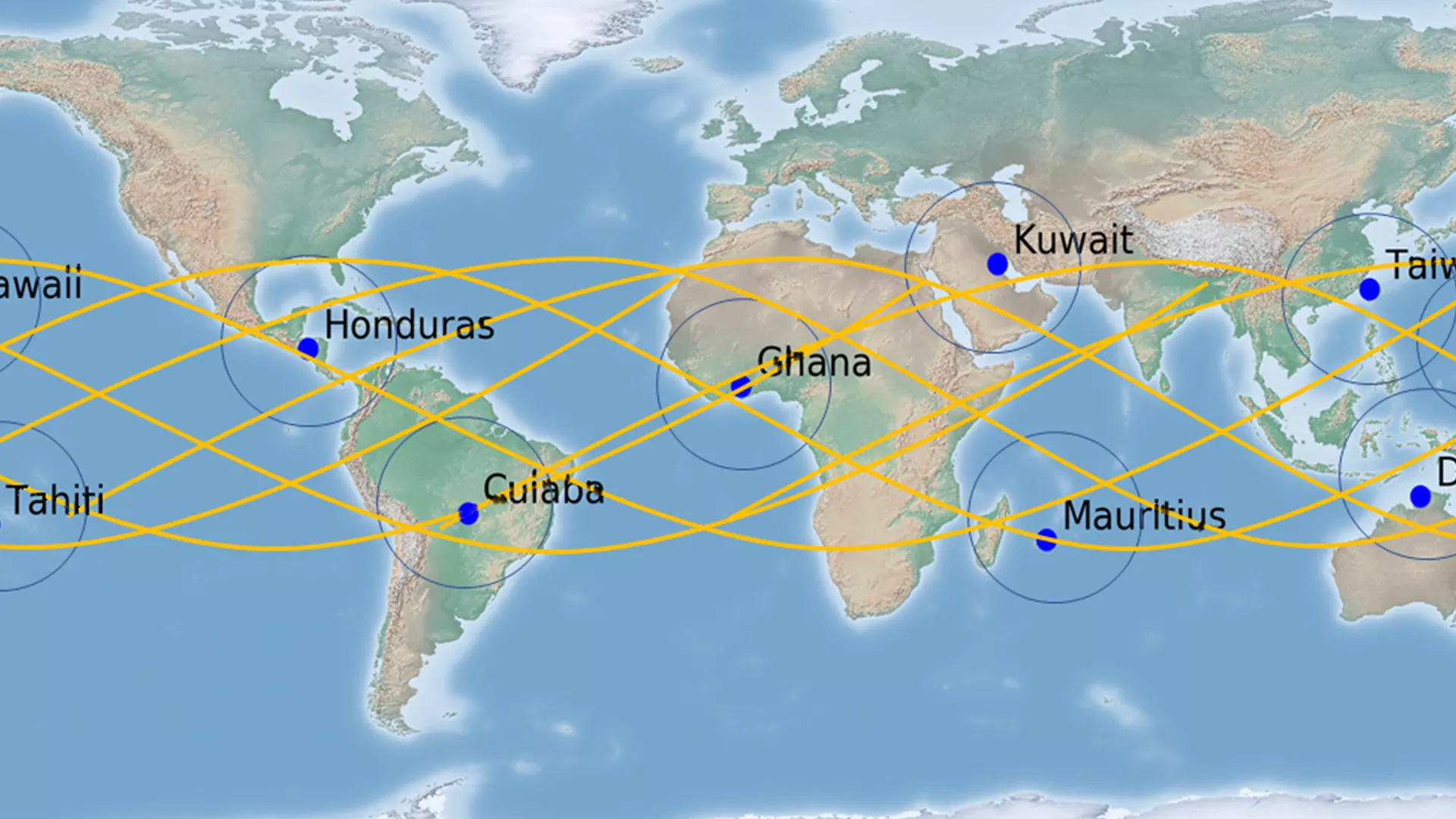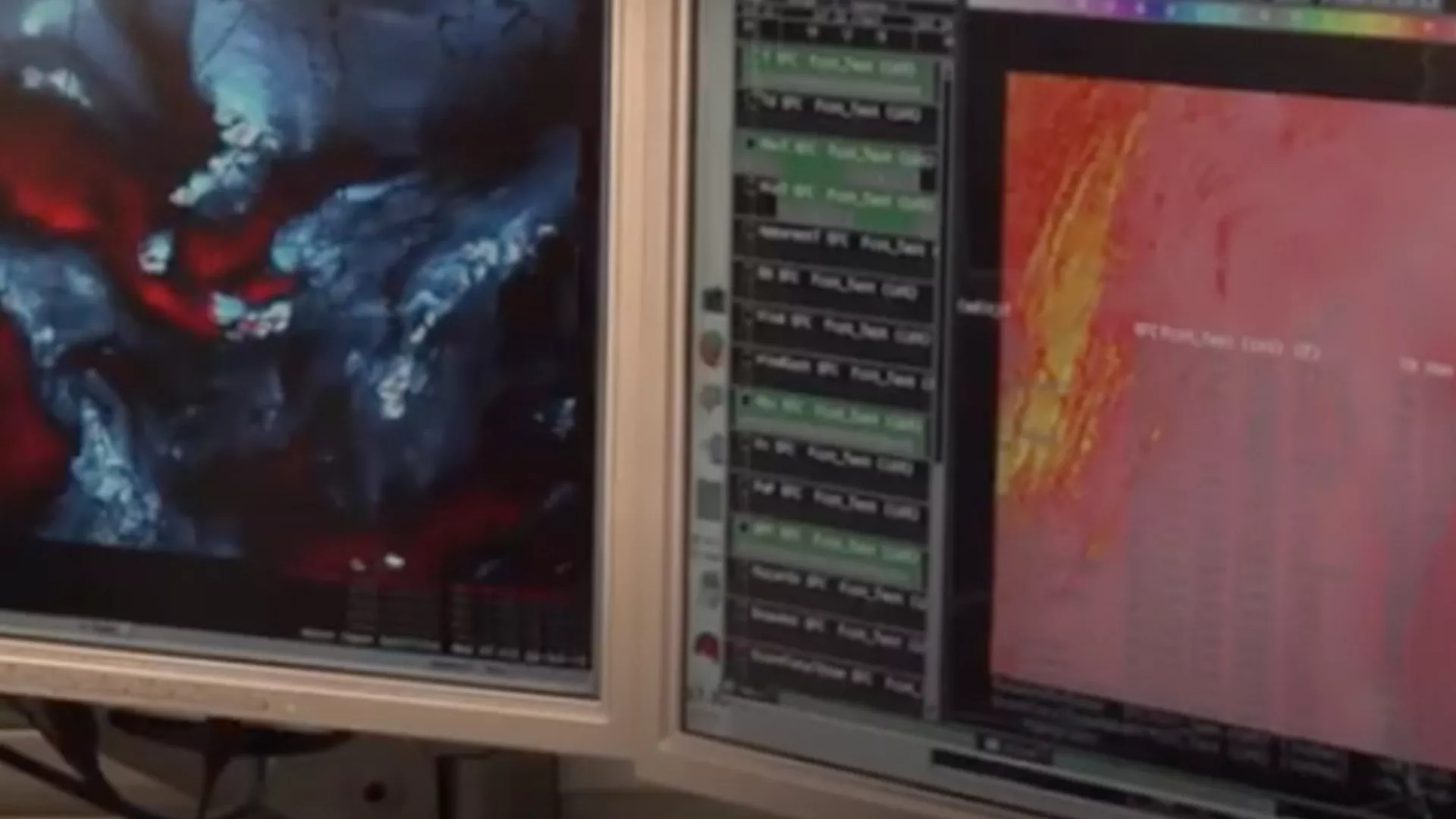What is COSMIC-2?
To make accurate weather forecasts, meteorologists need a continuous source of data about our atmosphere. The Constellation Observing System for Meteorology, Ionosphere, and Climate-2 (COSMIC-2) is made up of six remote-sensing smallsats that form a network.
Building upon the success of the COSMIC-1 program, the COSMIC-2 smallsats are constantly orbiting Earth, collecting atmospheric data used for weather forecasting, space weather monitoring, and climate research.
NOAA is partnering with the U.S. Air Force (USAF), U.S. Space Force (USSF), Taiwan’s National Space Organization (NSPO), and the University Corporation for Atmospheric Research (UCAR) on this environmental satellite program.
Explore
How does COSMIC-2 work?
This constellation of COSMIC satellites circles the equator at approximately 17,000 miles per hour and uses a technique called radio occultation to collect information on our planet’s atmosphere.
Here’s how it works:
Global Positioning System (GPS) satellites constantly send signals down to receivers on Earth, but those signals get distorted along the way because the density of Earth’s atmosphere changes with height. COSMIC-2 satellites can detect and measure any small bends in those signals just before they are cut off by Earth’s horizon. The measurements made during the three-minute period before the radio signal is cut off are known as radio occultation, and these data are what gives scientists near real-time information about the Earth’s atmosphere including conditions such as: temperature, pressure, density and water vapor.
Related News
-
NASA Awards Contracts for NOAA Coronagraph Instrument Phase A Study
-
The COSMIC-2 mission is helping scientists better understand and predict space weather events.
-
COSMIC-2 has passed its Full Operational Capability (FOC) review, which shows it is meeting or…
-
Thanks to a software update, COSMIC-2 is gathering more data than ever since mission start.





